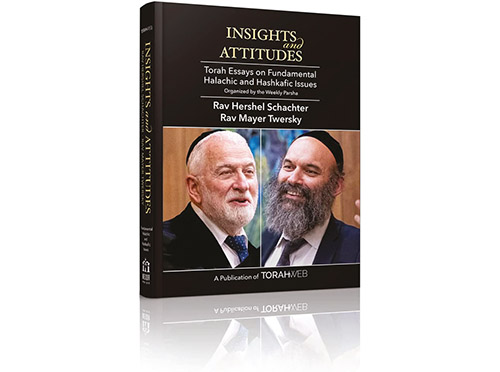
Editor’s note: This series is reprinted with permission from “Insights & Attitudes: Torah Essays on Fundamental Halachic and Hashkafic Issues,” a publication of www.TorahWeb.org. The book contains multiple articles, organized by parsha, by Rabbi Hershel Schachter and Rabbi Mayer Twersky.
The Midrash (Yalku Shimoni, Tehillim 1:1) points out that the beracha which Avraham granted his son Yitzchak revolved around the verb “nasan” (“ויתן אברהם את כל אשר לו ליצחק”). Therefore, years later, when Yitzchak formulated his beracha for his son Yaakov, he opened with the words, “ויתן לך האלקים.” And because Yitzchak’s beracha ended with the use of the verb “kara” (“ויקרא יצחק אל יעקב”), years later, when Yaakov was formulating his beracha for his children, he started with the same expression, “ויקרא יעקב אל בניו.” Yaakov concluded his berachos with the expression “וזאת אשר דבר להם אביהם.” Therefore, many years later, when Moshe Rabbeinu formulated his berachos to Klal Yisrael, he too used the same expression, and started with the phrase, “Vezos haberacha.” And again, because Moshe concluded his berachos with the expression, “ashrecha Yisrael,” years later, when King David composed Sefer Tehillim, he began with the same expression, “Ashrei haish.”
The Midrash learns from the pasuk “מזקנים אתבונן” (Tehillim 119:100), that each generation learns from and emulates the practices of the earlier generation. The rabbis of the Midrash understood quite well that it would be unreasonable to expect all generations to always use the exact same expressions. Times change, attitudes change, and expressions of speech change. The Rabbis simply felt that the practices of each generation should be connected with those of the earlier generations.
If the Rabbis felt this way with respect to formulating berachos, certainly they would feel more so with respect to halachos of how to keep the mitzvos. True, the Torah scholars of each generation—if they are qualified—may express an opposing view to those of earlier generations. We see many times in the Mishna that a later beis din overturned the pesak of an earlier beis din. But there still must be a hemsheich and a connection to the Torah views of the earlier generations. To use the terminology of the Rav, chiddush (new insight) is acceptable, but shinnui (change) is not; and one must have a very strong masorah to know how to distinguish between the two. Mattan Torah did not occur yesterday. Our Torah of today is only valid to the extent that it has been transmitted accurately, by the Masorah, from earlier generations. That Masorah is one consisting of a way of thinking halachically, as well as attitudes, perspectives, and style, vis-à-vis the wording of berachos.
Rabbi Hershel Schachter joined the faculty of Yeshiva University’s Rabbi Isaac Elchanan Theological Seminary in 1967, at the age of 26, the youngest Rosh Yeshiva at RIETS. Since 1971, Rabbi Schachter has been Rosh Kollel in RIETS’ Marcos and Adina Katz Kollel (Institute for Advanced Research in Rabbinics) and also holds the institution’s Nathan and Vivian Fink Distinguished Professorial Chair in Talmud. In addition to his teaching duties, Rabbi Schachter lectures, writes, and serves as a world renowned decisor of Jewish Law.











